The 45 Most Important SEO KPIs For Marketers To Track
The 45 Most Important SEO KPIs For Marketers, our respondents recommended being below, along with details on why they believe each metric is important to track.
Google changes often catch CMOs off guard. At Matrix Marketing Group, we keep an eye on the ever-evolving Google landscape and make sure our clients are up to date.
We provide comprehensive digital marketing services, from SEO and PPC management to social media marketing and content creation. With our team of experts, you can rest assured that your campaigns are always optimized for maximum results.
We understand that staying on top of all the changes Google throws can be overwhelming and time-consuming. Our team is here to take the load off your shoulders and help you get the most out of your digital marketing efforts.
Marketers are no strangers to data and analytics; it’s critical to growing your business, understanding customer behavior, and improving lead generation.
But when it comes to SEO (search engine optimization), tracking key performance indicators (KPIs) is essential for planning effective strategies and staying ahead of the competition.
That’s why we’ve compiled an extensive list of the 45 most important SEO metrics marketers should track to maximize their ROI from search engine rankings.
No matter what type of organization or size you operate, these metrics can help tell a story about how well your website is performing in terms of organic traffic, conversions, visibility on various platforms – locally and globally – and overall campaign effectiveness. Ready to learn more? Keep reading!
Introducing the 45 Important SEO KPIs for Marketers
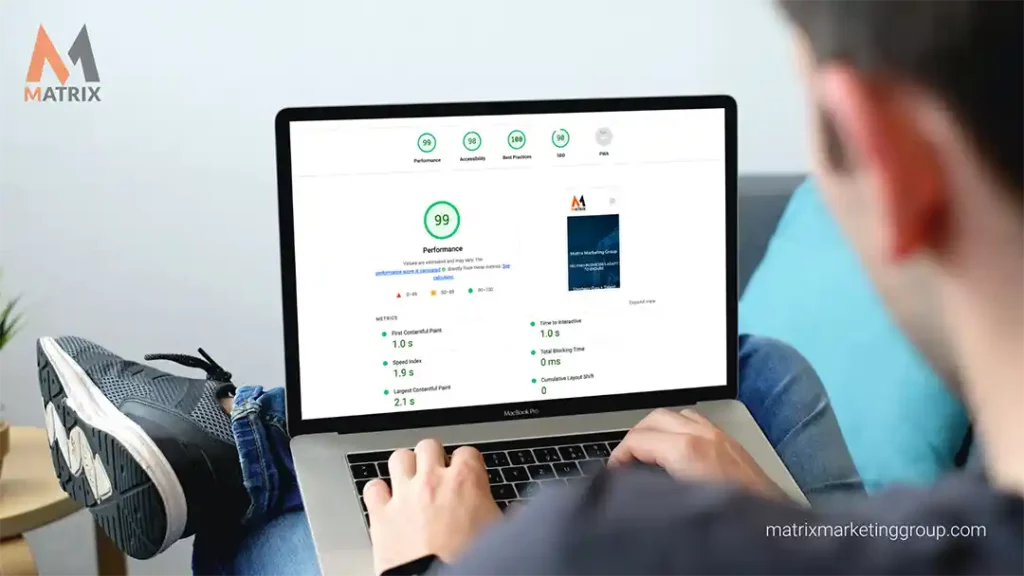
Understanding the intricacies of search engine optimization (SEO) is undeniably vital for marketers in today’s digital landscape. To better navigate this complex territory, being well-versed in the 45 most important SEO key performance indicators (KPIs) is crucial.
These KPIs act as valuable tools, enabling marketers to gauge the effectiveness of their SEO strategies and make informed decisions to optimize their websites for enhanced online visibility.
By closely monitoring these metrics, marketing professionals can unearth invaluable insights into user behavior and preferences, allowing them to refine their tactics and successfully drive organic traffic.
In an age where information is currency, proficiency in utilizing these 45 essential SEO metrics is paramount for marketers seeking to elevate their digital marketing prowess and stay ahead in the fiercely competitive online industry.

The Fundamentals of SEO KPIs
Understanding the fundamentals of SEO metrics is crucial for any professional striving to improve their website’s online presence.
These key performance indicators provide valuable insights into the efficacy of search engine optimization strategies, enabling professionals to make data-driven decisions in pursuit of enhanced visibility and increased web traffic.
By meticulously monitoring organic search traffic, click-through rates, impressions, and average session duration, individuals can pinpoint specific areas requiring optimization for better alignment with search engine algorithms.
Furthermore, a thorough grasp of SEO KPIs can identify potential technical issues, such as slow page load times or broken links. In short, mastering the essentials of SEO metrics is an indispensable skill for professionals looking to elevate their website’s search engine ranking and overall digital performance.
Four Types of SEO KPIs

In the dynamic world of search engine optimization, tracking your website’s performance through Key Performance Indicators (KPIs) is crucial for maintaining a competitive edge.
Every professional should focus on four types of SEO metrics to ensure optimal visibility and engagement: organic traffic, keyword rankings, bounce rate, and backlinks. These KPIs allow businesses to effectively measure their performance on search engines, identify areas of improvement, and adjust their strategies accordingly.
By paying close attention to these measurements, businesses can gain more prominent positions in search results, attract the right audience, and ultimately increase conversion rates.
Staying ahead by monitoring these essential SEO metrics is an indispensable tool for any professional seeking growth in the digital landscape.
a. Organic Search KPIs
In today’s digital landscape, understanding and optimizing your website’s performance is crucial to the success of your online presence. One area often overlooked is the significance of organic search Key Performance Indicators (KPIs).

These metrics provide valuable insights into how well your website performs in search engine rankings and help you identify areas for improvement.
Monitoring organic search KPIs, such as click-through rate, bounce rate, and average time on page, allows you to identify which content drives the most traffic, appeals to the target audience, and keeps users engaged on your site.
By comprehensively analyzing this data, you can develop effective strategies to optimize your website’s search engine and enhance your online reach within your designated market.
b. Paid Search KPIs
In today’s digital landscape, it has become crucial for businesses to keep a close eye on their marketing efforts, particularly in paid search. One way to ensure the effectiveness and efficiency of these campaigns is through the diligent monitoring of Key Performance Indicators (KPIs).
KPIs serve as a navigational tool for marketers, shedding light on areas that require optimization and adjustments. By carefully tracking various data points such as click-through rate (CTR), cost per click (CPC), and conversion rate, professionals can make data-driven decisions to propel campaigns toward their desired goals.
Furthermore, evaluating KPIs over time allows marketers to recognize trends and patterns and adapt their strategies accordingly, ultimately maximizing the return on investment for their paid search endeavors.
c. User Experience KPI’s
User Experience (UX) Key Performance Indicators (KPIs) are crucial success metrics for organizations aiming to deliver exceptional user experiences.
To truly understand and assess the effectiveness of a product or service, it is essential to have a strong grasp of KPIs for seo, which provide valuable insights into user behavior and preferences, as well as the overall performance of the design.
Professionals in the UX field employ these indicators to identify areas requiring improvement or modification, optimizing the product or service for better engagement and satisfaction.
By leveraging these UX KPIs, organizations can ensure they meet user needs, gain a competitive edge, and foster brand loyalty in today’s digitally-driven landscape.
d. Technical SEO KPIs
Technical SEO metrics provide valuable insights that enable businesses to optimize their websites for maximum efficiency and reach while adhering to search engine guidelines.
By tracking these performance indicators, companies can identify areas that require attention and swiftly map out strategies to move forward. The world of technical SEO can be incredibly intricate; the key is breaking it down into manageable components, including site speed, crawlability, indexation, mobile-friendliness, and security, to name a few.
These elements’ synergy impacts a website’s overall performance and determines its search ranking. A deep understanding of these KPIs is essential for professionals in the digital marketing sphere as they aim to optimize their clients’ online presence and drive their target audience toward their platforms.
Analyzing the Top 10 Organic Search KPIs
In today’s highly competitive digital landscape, understanding and strategically monitoring the top 10 organic search key performance indicators (KPIs) is more critical than ever. By thoroughly analyzing these vital metrics, businesses can better position themselves for success and drive optimal results in organic search.
The leading KPIs to watch are searched impressions, click-through rate (CTR), organic search traffic volume, average time spent on the site, and keyword rankings. Additionally, it’s crucial to keep tabs on bounce rate, total conversions, conversion rate, pages per session, and the percentage of new sessions.
By regularly evaluating these top KPIs, marketers can identify trends, strengths, and areas for improvement, ultimately fine-tuning their SEO strategies to adapt to ever-evolving search engine algorithms and user behaviors.
Mastering these essential KPIs enables businesses to maximize their organic search potential, driving increased visibility, higher-quality traffic, and, ultimately, greater revenue growth.
Examining the Top 10 Paid Search KPI’s
Delving into paid search advertising requires a keen understanding of the key performance indicators (KPIs) that drive success. By closely examining the top 10 paid search KPIs, digital marketers can effectively gauge campaign performance, optimize their strategies, and achieve a higher return on investment (ROI).
Among these critical data points are click-through rate (CTR), cost per click (CPC), conversion rate, cost per acquisition (CPA), impressions, quality score, impression share, average position, and return on ad spend (ROAS).
These metrics offer invaluable insights into various aspects of paid search campaigns, from ad visibility and user engagement to conversion efficiency and overall profitability. By fostering a professional approach to analyzing and optimizing these KPIs, marketers are well-equipped to drive lasting success in the competitive realm of paid search advertising.
Assessing the Top 10 User Experience KPI’s
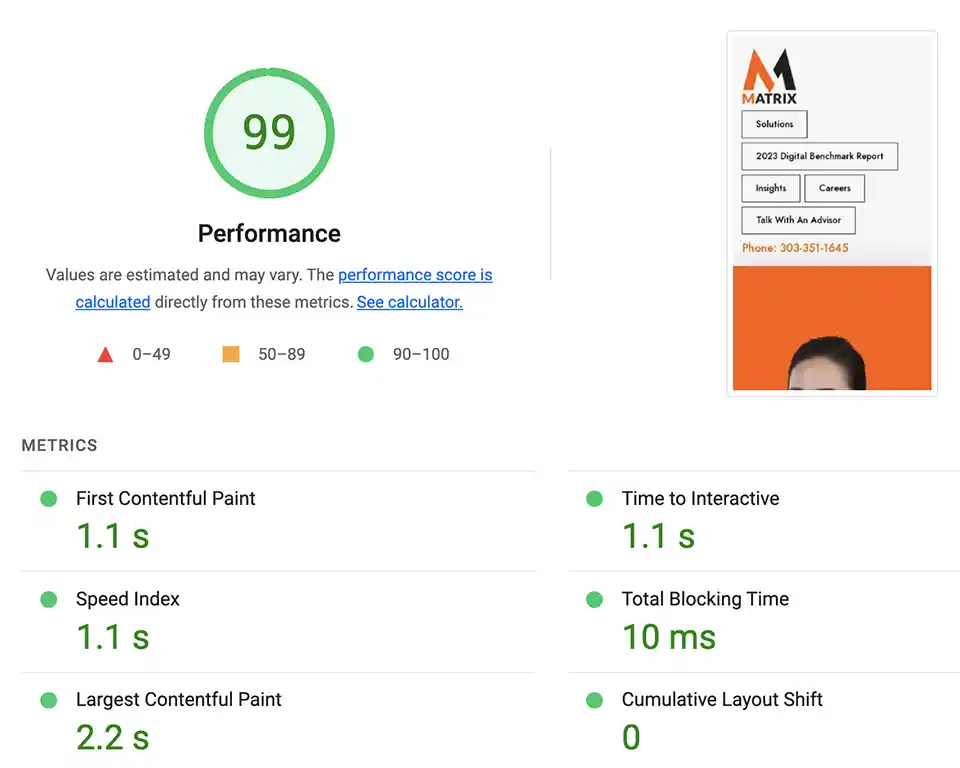
In today’s competitive digital landscape, businesses must prioritize user experience (UX) in their product design and development efforts.
Assessing the top ten user experience key performance indicators (KPIs) allows organizations to gain valuable insights into how users interact with their products and which areas need fine-tuning.
By meticulously examining task completion rates, page load times, and conversion rates, professionals are better equipped to make data-driven decisions that ultimately contribute to unparalleled user satisfaction.
Furthermore, analyzing navigation efficiency and user feedback opens up avenues for improvements that may not have been obvious at first glance. A well-executed user experience strategy is essential for creating engaging digital platforms that foster loyalty and drive long-term growth.
Organic Traffic Metric
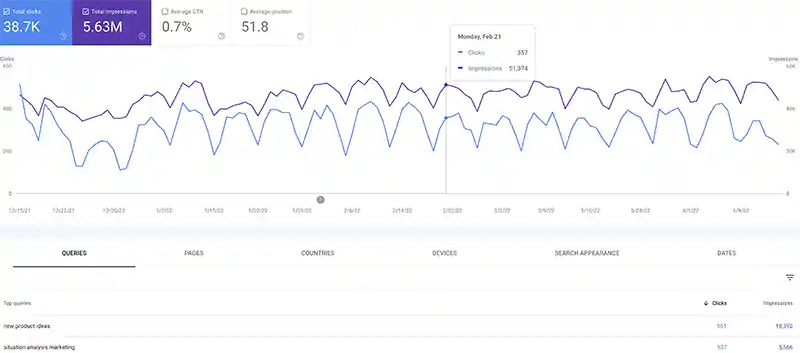
The organic traffic metric is a fundamental aspect of any digital marketing strategy and is a key indicator of a website’s performance and overall success in attracting visitors.
As a professional digital marketer, it is imperative to understand the significance of this metric, as it represents the purest form of the engagement generated through the effective use of Search Engine Optimization (SEO) techniques, targeted content creation, and efficient website design.
By carefully analyzing organic traffic data, marketers can identify trends and patterns in user behavior, enabling them to make well-informed decisions to optimize their strategies for improved customer acquisition and retention.
Moreover, healthy growth in organic traffic is often associated with an enhanced brand reputation and increased online visibility, ultimately resulting in a higher return on investment for digital marketing efforts.
Organic Traffic By Visitor Location
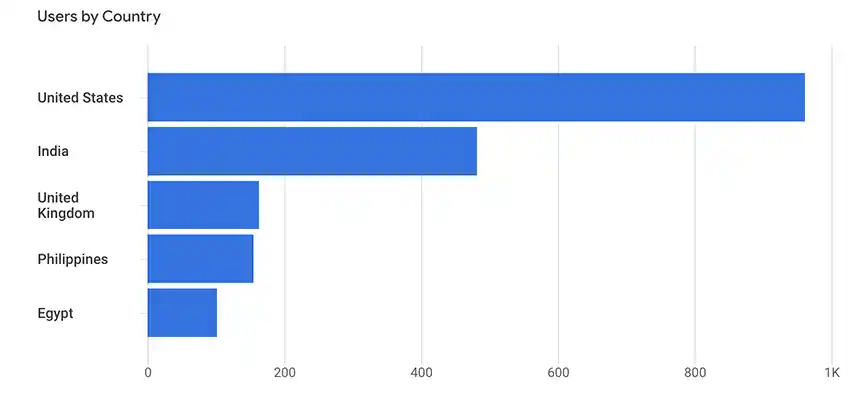
Delving into organic traffic by visitor location can provide valuable insights for businesses seeking to expand their digital presence and boost their online brand awareness.
By examining the geographical distribution of visitors, professionals in the digital marketing landscape are better equipped to customize content and strategies, thus catering to the preferences and interests of various regions.
Analyzing visitor location also enables understanding emerging market trends, empowering decision-makers to make informed choices about potential growth opportunities in untapped demographic areas.
Organic traffic can be essential for developing and nurturing long-term user relationships, contributing significantly to brand loyalty and customer retention. In a world increasingly interconnected by globalization, leveraging organic traffic data by visitor location is imperative for businesses to stay ahead in the dynamic digital milieu.
Mobile Organic Traffic
In today’s fast-paced digital landscape, mobile organic traffic has become a vital component for the growth and success of businesses. With increasing number of people accessing the internet through their smartphones and tablets, businesses must optimize their online presence for mobile users.
A professionally designed, mobile-responsive website and relevant and engaging content can significantly impact the flow of mobile organic traffic. Moreover, implementing effective search engine optimization strategies targeted toward mobile users is advantageous and essential for any business striving to attain a competitive edge.
The power of mobile organic traffic lies in its ability to increase brand visibility, enhance user experience, and, ultimately, boost conversion rates, making it a force to reckon with in digital marketing.
Number of Unique Pages that Drive Organic Traffic
The significance of diverse, unique pages driving organic traffic to your website cannot be understated. In today’s competitive digital landscape, it is essential to expand your online presence to reach a wider audience and stay ahead of the curve.
Focusing on creating high-quality content for an array of unique pages will help your website rank higher in search results, ultimately driving a steady flow of organic traffic.
As a professional in this field, optimizing each page with relevant keywords and implementing effective search engine optimization (SEO) strategies, coupled with engaging and informative content, can pay significant dividends.
Remember, the key to sustainable success is continually developing and maintaining diverse, authoritative pages that organically attract users and keep them returning for more.
New Organic Traffic
The realm of digital marketing is constantly evolving, and one of its most prominent aspects is organic traffic. New organic traffic strategies surfaced as businesses and marketers strive to improve their online presence in a fiercely competitive environment. As a professional, staying well-versed with the latest techniques can be a game changer in the long run.
Incorporating these cutting-edge methods into your repertoire allows for improved search engine rankings, higher website visibility, and increased user engagement – all essential elements in driving business growth.
By staying updated with industry innovations and continually adjusting your tactics to adapt to the ever-changing digital landscape, you can ensure long-term success in attracting and retaining valuable organic traffic.
Organic Impressions
Keeping track of organic impressions is a core SEO KPI that all marketers should strive to measure. Organic impressions refer to the number of times a certain page, article, or product is seen in a search engine.
Observing such data consistently will enable any online marketer to understand the reach of their campaigns better and optimize for desired results.
Moreover, understanding the organic impressions of your website will help you measure brand awareness and user behaviors on various levels, providing deep insight into what works best for your business.
Monitor your organic impressions and leverage this key performance indicator to make smarter decisions when running digital campaigns.
Average Time on Page
Average Time on Page is essential for understanding user engagement and behavior on a website. This metric reveals the amount of time, typically measured in seconds that visitors spend interacting with a particular webpage before either leaving or navigating to another section of the site.
It plays a crucial role in assessing your online content’s effectiveness and quality and offering valuable insights into optimizing your website for a better user experience. By analyzing fluctuations in the average time on page, website owners can gauge the efficacy of specific design elements or the appeal of the written content.
This information can be utilized to fine-tune a website or digital marketing strategy, ultimately leading to enhanced user satisfaction, improved conversion rates, and heightened brand or message awareness.
Scroll Depth
Scroll depth is essential for businesses and website owners to monitor user engagement and evaluate content effectiveness. It indicates how far down individuals are scrolling on a webpage, allowing a comprehensive analysis of visitor behavior.
By closely analyzing scroll depth data, site administrators can strategically improve user experience and optimize content for maximum conversion rates.
Ultimately, understanding and leveraging scroll depth can highlight the most engaging areas of a website, help streamline content design, and contribute to the long-term success of an online presence.
As a professional in this domain, I cannot emphasize enough the importance of incorporating scroll depth analytics into your digital marketing and content strategies.
Content-Length

The significance of Content-Length cannot be overstated in today’s digital era, where seamless communication and data transfer contribute to business success.
As a crucial component of the HTTP (Hypertext Transfer Protocol) response header, Content-Length serves the purpose of providing accurate and concise information about the size of the data being transferred, measured in bytes.
This invaluable parameter allows the sender and receiver to efficiently manage the data exchange, preventing any misunderstandings or delays in processing. In professional settings, effectively utilizing Content-Length can enhance web application performance, streamline user experiences, and, ultimately, smoother interoperability between different systems.
As we increasingly rely on technology to propel our professional endeavors, mastering the intricacies of content length will prove pivotal in optimizing work processes and communication strategies.
Session Duration
Session duration, a crucial metric in web analytics, plays a vital role in understanding user behavior on websites and applications.
By measuring the amount of time a user spends on a site, businesses can gain valuable insights into their website’s performance, determine the effectiveness of their content, and identify areas that may require improvement.
Moreover, a deeper analysis of session duration metrics can help organizations recognize patterns, such as user engagement levels and potential retention issues, and even uncover the reasons behind customer drop-offs.
Consequently, evaluating session duration needs to be emphasized more, as it ultimately shapes the user experience and drives business success.
Pages Per Session
Pages per session are a crucial metric for monitoring the effectiveness of your website in providing valuable content and an intriguing user experience.
Professionals in the digital realm recognize that a healthy pages per session value can indicate higher levels of user engagement, satisfaction, and the likelihood of conversion.
A better grasp of the concept and optimizing pages per session often leads to lower bounce rates and increased site dwell time.
By conducting thorough research and implementing innovative strategies to cater to their target audience, professionals can bolster the appeal of their website and, ultimately, experience profound growth in their online presence and overall business success.
Bounce Rate
Bounce rate is a crucial metric in measuring the effectiveness and appeal of your website. As a professional, understanding this key performance indicator allows you to analyze user behavior, make informed decisions, and improve the user experience.
A high bounce rate indicates that visitors leave your website quickly after arriving without exploring further or engaging with your content. This could be due to several factors, such as poor design, irrelevant content, or slow page loading times.
By examining the bounce rate, you can identify areas of your website that may require optimization to ensure visitors stay engaged, navigate your site, and eventually convert into loyal customers. It is essential to consistently monitor this metric, as it can guide you towards a more successful digital presence and overall better user experience.
Exit Pages
Exit pages represent a critical and often overlooked aspect of any successful online business endeavor.
They are the final point of interaction that user experiences on your website, and understanding their significance can help improve user engagement and monitor the overall effectiveness of your site.
A professional analysis of these pages can provide valuable insights into the user journey, uncovering potential obstacles or deterring elements that may drive visitors away.
Hence, it is essential to continually evaluate the performance of your site’s exit pages, making adjustments as needed to enhance user experience, retention, and, ultimately, your path to success.
Page Load Speeds
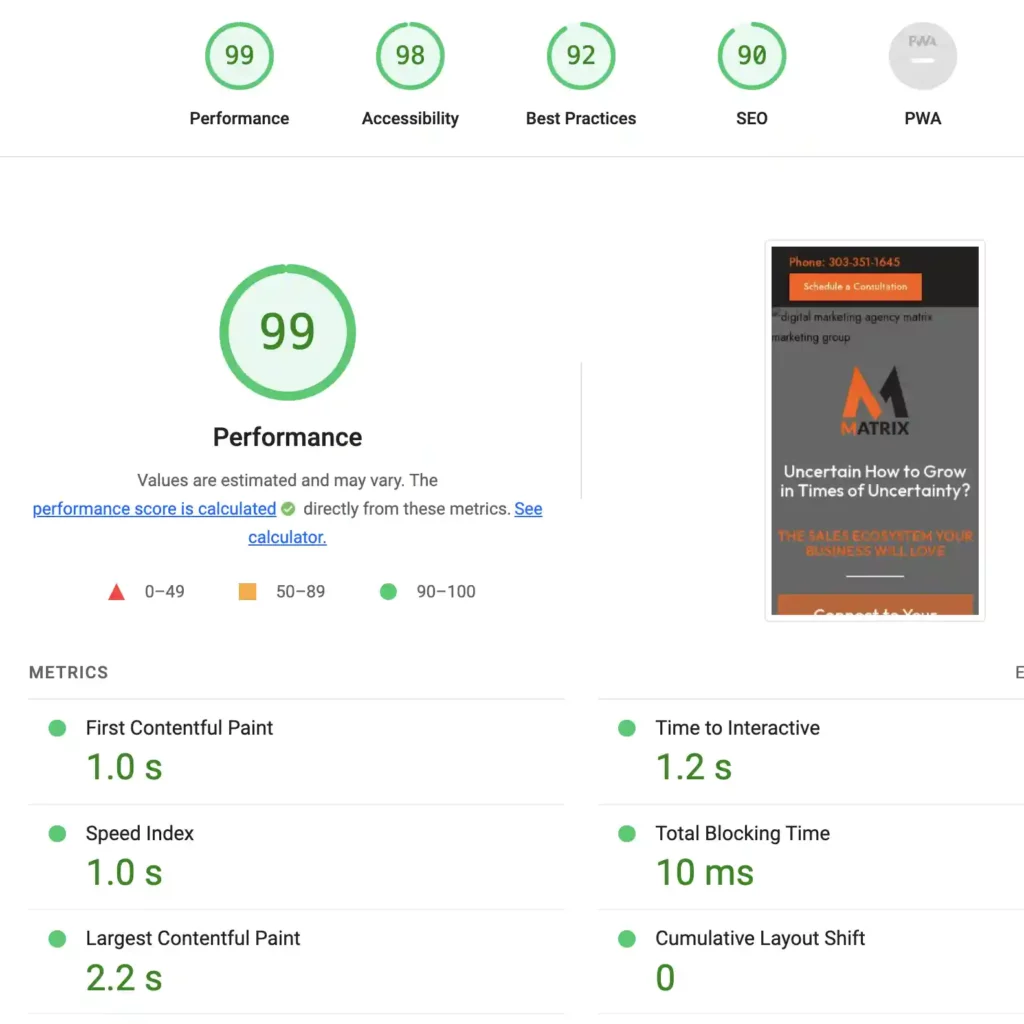
In today’s fast-paced digital world, page load speeds play a vital role in determining the success of your online presence. A professional approach to maintaining optimal page load speeds can greatly impact user experience, making it more seamless and enjoyable for site visitors.
Additionally, search engines consider the time it takes for a page to load when ranking a website, further emphasizing the importance of optimizing this aspect of your online platform.
By investing in faster load speeds, not only do you enhance user satisfaction, but you also improve your search engine rankings and organic visibility. Incorporating strategies and tools to optimize page load times ensures your digital presence’s continued growth and success.
Percentage of Returning Visitors
The percentage of returning visitors speaks volumes about the effectiveness and relevance of a website’s content in capturing an audience’s interest.
In a world of endless information, fostering brand loyalty and creating a sense of community around a website is essential in ensuring success.
A high percentage of returning visitors reflects the satisfaction users experience when interacting with your site and showcases their trust in your brand.
This metric, therefore, serves as an insightful indicator for assessing the sustainability of a website in the face of competition, providing valuable guidance for future improvements and strategies.
Keeping track of this aspect can enable stakeholders to make well-informed decisions that ultimately lead to an enhanced user experience and greater overall impact in the online space.
Keyword Rankings
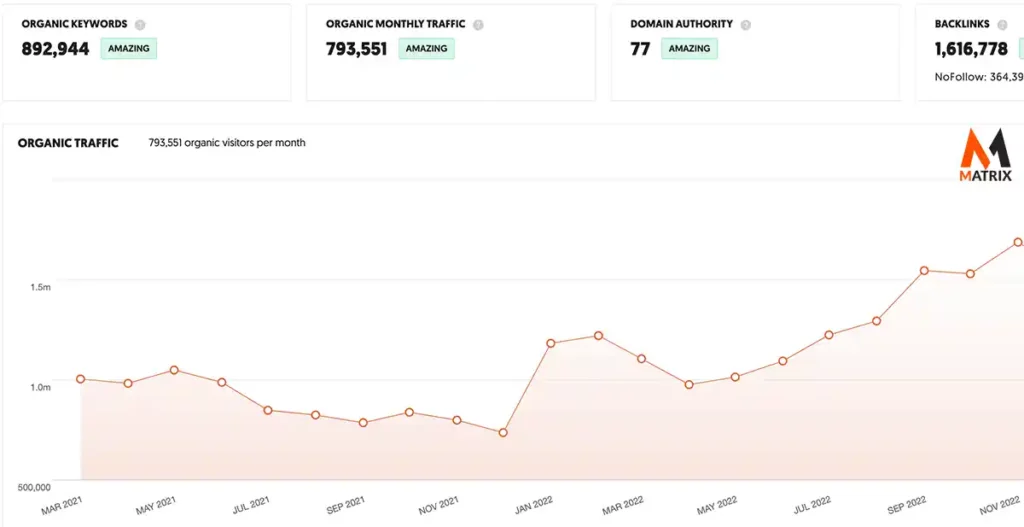
In the dynamic and competitive landscape of digital marketing today, achieving high keyword rankings plays a vital role in ensuring the success and visibility of your online presence.
As a professional in this field, staying ahead of the curve necessitates a keen understanding of search engine algorithms, evolving search patterns, and user intent.
Developing and implementing well-optimized content and a strategic plan to enhance organic search performance is imperative. Moreover, meticulously analyzing data points and conducting regular assessments of your website’s keyword performance contributes to identifying loopholes and optimizing approaches for long-term growth.
In essence, securing high keyword rankings ensures that your website garners a steady traffic flow and bolsters your credibility as an industry leader, improving customer trust and boosting conversions.
The Number of Ranking Keywords
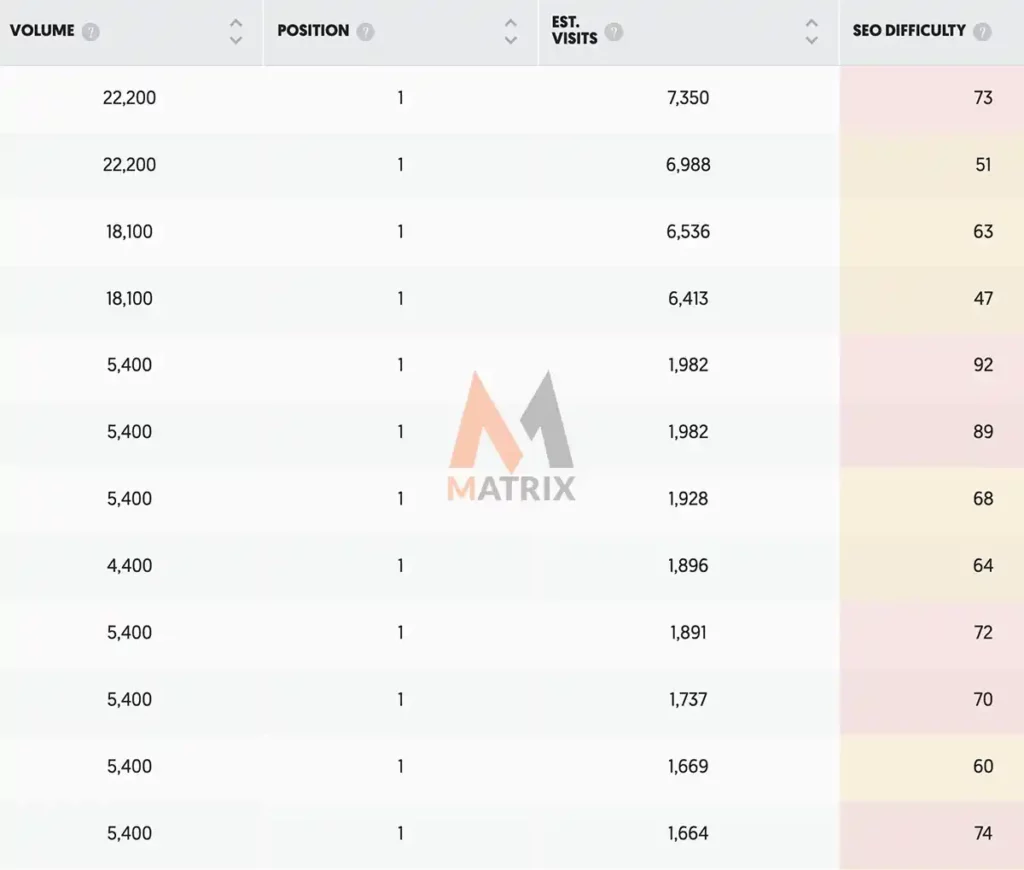
The importance of having a competitive number of ranking keywords in the digital landscape cannot be overstressed. As a professional aiming to make a mark in the online world, you must employ the right strategies to increase the range of keywords that rank organically in search engines.
Ranking for many relevant keywords translates to better visibility for your brand or organization and enhances your credibility among potential clients, widening your reach across digital platforms.
By utilizing the insights provided by search engine optimization (SEO) tools, businesses and professionals can often analyze keywords in their niche, choose the ones most related to their target audience, and optimize their websites accordingly.
Over time, a well-strategized use of keywords will considerably impact driving targeted traffic to your website and ultimately contribute to the overall success of your online ventures.
Commercial-Intent Keywords
In today’s digital marketing landscape, using commercial-intent keywords has become an essential strategy for businesses seeking to target their audience and ultimately drive sales effectively.
As a professional in the industry, it is crucial to understand the importance of utilizing these high-converting keywords in your campaigns.
By integrating commercial-intent keywords into your advertising copy, landing pages, and SEO efforts, you can significantly increase the likelihood of reaching potential customers who are further along in the buying journey and are ready to make a purchase.
With the growing competition in the online market space, capitalizing on commercial-intent keywords can give your business a vital edge in achieving greater success and robust ROI.
Branded and Non-Branded Search Volume
Understanding the differences between branded and non-branded search volume is essential for evaluating the effectiveness of your digital marketing strategy. Branded search volume refers to searches that include specific brand names or trademarks, indicating that users are already aware of the company when conducting their online queries.
Conversely, non-branded search volume comprises searches that lack any reference to a particular brand, offering valuable insights into customer behavior when unfamiliar with or indifferent to a certain company.
By analyzing these two types of search volume, marketing professionals can determine the reach and recognition of their brand and identify potential growth areas by targeting audience members who are yet to be acquainted with their offerings.
This approach can facilitate informed decision-making and enable businesses to allocate their resources to overall success better.
Competitor Rankings
In today’s fiercely competitive business landscape, keeping a close eye on competitor rankings has become crucial for organizations seeking growth and long-term success. Monitoring such rankings not only helps firms identify their position within the industry but also offers valuable insights into the strengths and weaknesses of key rivals.
By diving deeper into the trends and strategies propelling their competitors’ success, companies can stay updated with market changes and adapt their strategies accordingly to stay ahead or catch up to their adversaries.
Furthermore, a professional analysis of these rankings can unveil potential threats, market opportunities, and areas for improvement, allowing decision-makers to make informed choices in the best interest of their organization. Indeed, giving due consideration to competitor rankings can be the catalyst that propels a company’s trajectory toward a sustainable competitive edge.
Featured Snippets
Featured snippets have revolutionized how users interact with search engines, providing concise and relevant answers to their queries at lightning speed.
These valuable pieces of information, often presented as a small box, extract essential points from high-quality, reputable websites, ensuring users receive accurate and reliable insights.
Furthermore, featured snippets have emphasized the importance of optimizing website content, encouraging professionals in the digital marketing space to fine-tune their strategies and maintain a competitive edge.
With more and more search engines prioritizing this informative feature, the impact of featured snippets is undeniable, effectively transforming the digital landscape and shaping the future of online search experiences.
Keyword Difficulty
In the realm of Search Engine Optimization (SEO), understanding keyword difficulty is crucial for the success of any online marketing strategy.
As a professional optimizing digital content, you must balance high search volume and competition. By comprehensively analyzing keyword difficulty, you can identify opportunities to rank well on search engine result pages, driving more web traffic and increasing conversions.
This vital SEO metric allows for strategically selecting keywords that aptly resonate with your target audience while being mindful of your ranking capabilities. Ultimately, grasping the nuances of keyword difficulty empowers you to make informed decisions and craft digital content that rises above the competition in a dense online landscape.
Estimated Traffic
As a professional in traffic management, understanding estimated traffic has become vital for the safety and efficiency of our daily commutes and the progress of urban planning and development.
Delving into the intricacies of estimated traffic allows us to predict the density and patterns of vehicular movements within a specific region, ultimately contributing to the reduction of congestion and improvement in transportation methods.
This allows businesses and individuals to save time, lower expenses, and diminish the overall environmental impact.
This fascinating area of expertise continues to evolve with the integration of advanced technologies, such as artificial intelligence and big data, allowing us to gain a deeper comprehension of traffic behavior and dynamics – an essential element in today’s fast-paced world.
Traffic Value
Traffic value plays a pivotal role in the progress and development of modern metropolitan areas. As urbanizations continue to surge, professionals analyze the importance of traffic value as it reflects a city’s infrastructure’s overall connectivity and efficiency.
This vital indicator optimizes transportation networks, streamlines commuting, and improves residents’ quality of life. Moreover, traffic value aids in making informed decisions about future investments in urban planning and public transportation systems.
By effectively utilizing traffic value, cities can nurture sustainable growth, boost economic activity, and ultimately enhance the experiences of those who live, work, and visit these bustling urban landscapes.
Click-Through Rate (CTR)
In today’s fast-paced digital landscape, maximizing the efficiency of marketing campaigns has become paramount, and one critical metric that helps achieve this is the Click-Through Rate (CTR). This highly invaluable tool measures the percentage of people who click on a specific link or advertisement after viewing it, thereby shedding light on the effectiveness of promotional content in driving customer engagement. CTR is a key indicator for marketers as it helps them identify strengths and weaknesses in their advertising campaigns and develop strategic adjustments to better resonate with their target audience.
It also aids in assessing the performance of various marketing channels, ultimately allowing marketers to allocate resources effectively, optimize the return on investment, and maintain a strong online presence.
With the significance of CTR in achieving business success, professionals need to familiarize themselves with its intricacies and utilize it to elevate the impact of their marketing campaigns.
Overall Number of Backlinks
The overall number of backlinks plays a critical role in determining a website’s online presence and credibility. From a professional standpoint, building a strong backlink profile is vital in enhancing search engine rankings.
Search engines like Google consider high-quality backlinks from reputable sources as a sign of trustworthiness and authority. Besides boosting organic traffic and visibility, an expansive backlink portfolio can facilitate referral traffic and promote brand awareness.
Nonetheless, rather than focusing on sheer quantity alone, businesses should endeavor to obtain relevant and authoritative backlinks to maximize their impact. By doing so, they can create a sustainable online presence that resonates well with search engines and users.
Number of Unique Referring Domains
In today’s digital landscape, the number of unique referring domains is pivotal in enhancing a website’s online presence and credibility.
As a professional, it is essential to acknowledge the significance of this metric in search engine optimization, as it reflects a diverse range of websites linking back to one’s own.
A higher number of unique referring domains not only indicates the popularity of a site but also improves its search engine ranking, thereby increasing the opportunities for organic traffic and leads.
It is crucial to continuously monitor and strive to grow this aspect of your digital strategy. It is a testament to your brand’s reach and establishes a strong foundation for online success.
Number of Backlinks to Specific Pages
In today’s highly competitive online landscape, having a strong web presence is crucial for businesses and individuals. One of the most effective ways to boost your website’s visibility and credibility is by increasing the number of backlinks pointing to specific pages on your site.
Backlinks, also known as inbound links, are external web pages that direct users to your content, acting both as endorsements and as a means of driving organic web traffic.
As search engines continue to evolve, they emphasize the quality and relevancy of these backlinks, making it increasingly important for webmasters and marketers to invest in strategic link-building campaigns.
By identifying and targeting high-authority websites within your niche or industry, you can enhance your online reputation while improving your search engine rankings, ultimately leading to greater exposure and success in the digital world.
New Backlinks
Acquiring new backlinks is crucial for any website to improve its search engine rankings and online visibility. As a professional in digital marketing, one must recognize the significance of constantly updating and refining the backlink profile.
By incorporating a thoughtful and strategic approach, it is possible to secure high-quality, relevant backlinks that will contribute to the overall success of your online presence. This involves exploring opportunities for outreach, creating share-worthy content, and establishing solid connections within your industry.
Furthermore, it requires a blend of technical proficiency, creativity, and persistence to adapt and thrive within the ever-changing landscape of search engine optimization.
Lost Backlinks
Regaining lost backlinks is essential to search engine optimization, ensuring that your website continually maintains a credible and robust online presence. It’s not uncommon for websites to lose backlinks over time as domains expire or web pages become inactive or deleted.
Therefore, it is crucial to proactively identify these lost backlinks and take prompt and effective measures to recover them.
By utilizing reliable SEO tools to analyze backlink profiles and regularly monitor any declines, webmasters can identify lost backlinks and reestablish connections with reliable sources.
This enhances the website’s credibility in search engines’ eyes and strengthens its ranking potential, ultimately contributing to increased organic traffic and online visibility.
Backlink Referral Traffic
In search engine optimization, backlink referral traffic enhances a website’s visibility and credibility.
As a professional in the digital marketing space, it’s vital to understand the significance of establishing a strong network of high-quality backlinks pointing to your website. This helps improve search engine rankings and drives consistent targeted referral traffic from credible sources.
Acquiring relevant and authoritative backlinks ensures the endorsement of your content’s value, attracting a wider audience and generating greater exposure for your brand.
Consequently, leveraging the power of backlink referral traffic can significantly boost your online presence and contribute to the long-term success of your digital marketing strategy.
Backlink Quality
In today’s competitive digital landscape, the quality of backlinks plays a crucial role in determining your website’s or online business’s success. High-quality backlinks improve your website’s visibility and credibility and contribute significantly towards a higher search engine ranking.
Obtaining relevant and authoritative backlinks from respectable websites is a professional and reputable approach to enhancing your website’s performance. It is essential to build valuable connections by creating valuable content that naturally attracts links from top-rated sources in your industry.
Prioritizing the quality and relevance of backlinks over their quantity will undoubtedly prove fruitful in the long run as search engines like Google refine their algorithms to favor quality over quantity.
By investing time and effort in acquiring high-caliber backlinks, you strategically elevate your online presence and foster long-lasting success.
Backlink Relevance
In the ever-evolving landscape of search engine optimization, backlink relevance has become increasingly critical in determining a website’s ranking on search engine results in pages.
Professional SEO practitioners must create high-quality, contextually relevant backlinks that add value to our target audience.
This means forging connections with authoritative websites within our niche, producing content that appeals to readers and search engine algorithms, and avoiding spammy tactics that could harm our online reputation.
By cultivating a network of relevant and valuable backlinks, we position our website for improved visibility, increased organic traffic, and long-term success in the competitive digital ecosystem.
Most Valuable Backlink
Securing the most valuable backlink in today’s competitive digital landscape can significantly impact your website’s visibility, credibility, and success.
A high-quality backlink from a reputable and authoritative source drives valuable referral traffic and signals to search engines that your content is trustworthy and worth ranking higher on search engine results pages.
Moreover, it highlights your expertise in your industry and helps establish meaningful relationships with other professionals.
Investing time and resources in crafting original, engaging content tailor-made for your target audience and fostering genuine connections with industry leaders is crucial to acquire the most valuable backlink.
Concentrating on these key aspects will increase the likelihood of attracting top-tier backlinks that skyrocket your website’s performance and place your brand at the forefront of your niche.
Link-Building Momentum
In today’s fast-paced digital world, building and maintaining robust link-building momentum is crucial for businesses striving to achieve long-term online success.
As a cornerstone of effective search engine optimization (SEO) strategies, a strong link-building campaign delivers numerous benefits for organizations seeking increased visibility, authority, and web traffic.
Developing a synergistic blend of high-quality content and targeted outreach activities is vital in cultivating valuable connections with industry leaders and influencers.
By prioritizing creating enduring relationships and engaging digital assets, companies pave the way for organic growth, improved brand positioning, and a sustained competitive edge in the ever-changing online marketplace.
With the support of experts and cutting-edge tools, any organization can embark on a rewarding journey to realize the full potential of link-building momentum.

Link Velocity
Link velocity, a crucial aspect of search engine optimization (SEO), refers to the rate at which new, high-quality backlinks are acquired for a website.
A website’s performance and ranking on search engine results pages (SERPs) heavily depend on its link velocity, as search engines consider this factor when determining the relevance and authority of the content.
To maintain a healthy link velocity, SEO professionals continuously analyze incoming backlinks to ensure their quality, relevance, and diversity. Implementing content marketing, social media promotion, and blogger outreach strategies can help enhance a site’s link velocity.
Monitoring and adjusting link velocity is a continuous process that enables websites to remain competitive and adapt to ever-changing search engine algorithms, thus improving SERP rankings and achieving online success.
Domain Authority

Domain Authority is a critical concept for any online entrepreneur or digital marketer in today’s rapidly evolving world of search engine optimization (SEO)—especially as competition for online visibility escalates.
Domain Authority provides a quantitative measure of a website’s search engine ranking potential as a professional SEO metric, offering valuable insights into how the website compares to its competitors.
Developed by renowned industry innovator Moz, Domain Authority uses a sophisticated algorithmic model that accounts for numerous factors, including link profile data and the intrinsic reputation of referring domains.
Harnessing the power of Domain Authority in your SEO strategy can lead to higher search engine rankings, enabling your website to drive increased organic traffic and ultimately achieve greater success in the saturated digital landscape.
Domain Rating Distribution
Domain Rating Distribution, a significant metric for understanding website authority, has gained considerable prominence among professionals who monitor and analyze the digital landscape.
Not only does this metric provide insight into a website’s relative strength within its niche, but it also serves as an essential tool for identifying opportunities for growth in a competitive digital environment. By understanding the intricacies of domain rating distribution, one can better strategize their website development and online marketing plans, leading to maximized returns on investment.
Utilizing this invaluable metric effectively can result in a strengthened online presence, improved search engine rankings, and a more successful and profitable digital footprint.
Internal Links
Internal links are vital in building a robust data architecture for any website. Their professional implementation not only enhances the user experience but also contributes to improved ranking.
By strategically connecting related content within site, internal links guide users through a seamless navigation journey, helping them discover and explore relevant information easily.
Moreover, these interconnected pathways signal search engine crawlers to index the website efficiently, leading to better visibility and higher rankings.
Ultimately, professional internal links establish a well-organized, user-friendly website that is easily discoverable and highly valued for its rich interconnectivity.
Crawl Errors
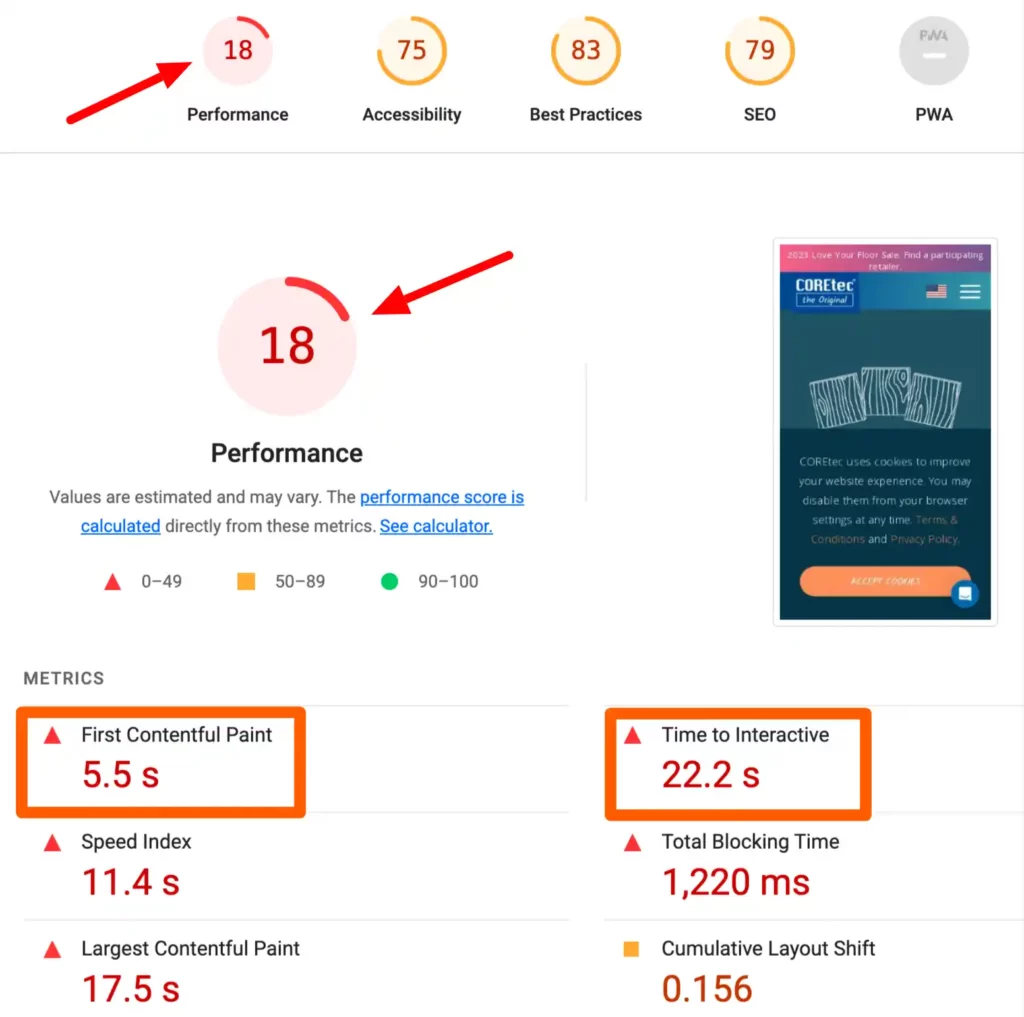
Crawl errors are a common issue faced by website owners and SEO professionals, impacting a website’s smooth functioning and overall performance.
These pesky obstacles emerge when search engine bots encounter difficulty crawling and indexing a site’s content. This, in turn, can lead to lowered visibility in search results, thereby hindering a site’s ability to attract organic traffic.
To identify and resolve these errors, professionals must utilize advanced tools such as Google Search Console, which offers insights and highlights potential fixes for problematic areas.
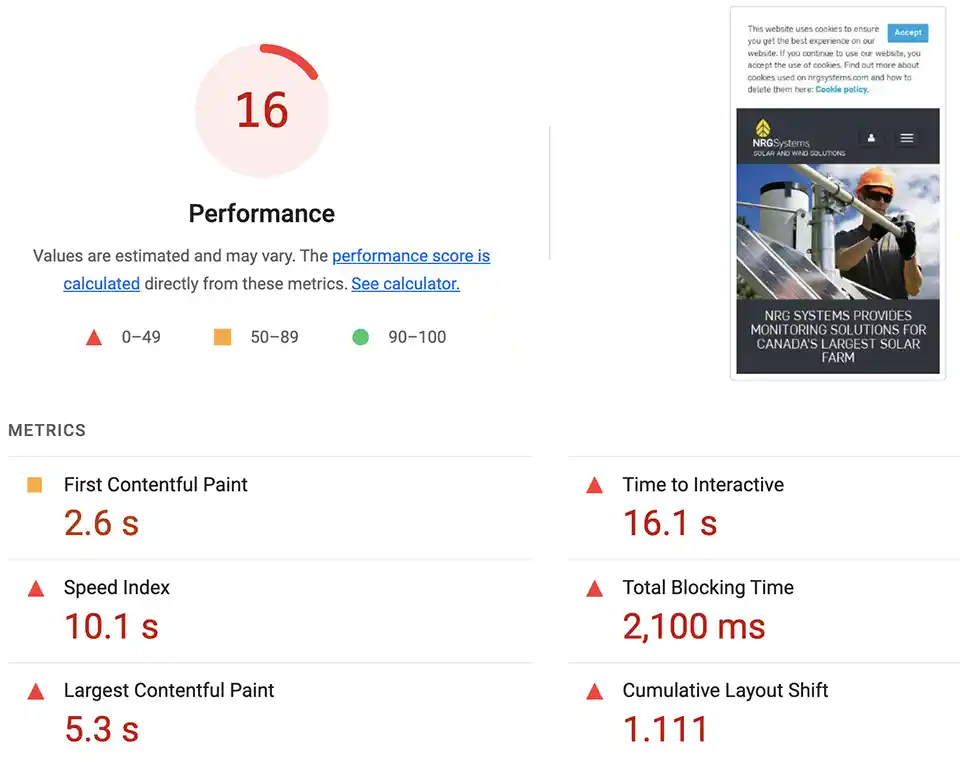
By diligently addressing crawl errors, website owners can ensure that their online presence is in tip-top shape, effectively delivering their message to their target audience and fulfilling their strategic objectives.
Goals/Conversions
Setting and achieving goals is an essential aspect of professional success. Striving toward specific objectives enables individuals to remain motivated, focused, and driven while advancing their careers or business.
However, tracking and evaluating progress in the process is vital, making adjustments if necessary to maximize conversion rates.
Converting goals into tangible outcomes requires an individual to develop a strategic approach incorporating discipline, commitment, and adaptability. Moreover, it encourages personal and professional growth by sharpening skills, expanding knowledge, and fostering a continuous improvement mindset.
Understanding the art of goal-setting and conversion will propel an individual toward success and instill a deep sense of satisfaction and self-accomplishment.
Conversion Rate
Conversion rate optimization refers to the strategic process of enhancing a website’s ability to convert visitors into customers who perform desired actions, such as making purchases, subscribing, or signing up for additional services.
Effectively improving your conversion rate is crucial in driving success and growth for any online platform. It involves evaluating and refining various elements of your website, such as the design, layout, user experience, and marketing tactics, to deliver a more engaging and persuasive platform for the audience.
By understanding and addressing users’ unique needs and preferences, you can significantly boost revenues and achieve greater results, making conversion rate optimization a vital aspect of a thriving digital ecosystem.
Revenue Per Visitor
Revenue Per Visitor (RPV) is a crucial metric for businesses to assess the effectiveness of their marketing efforts and website performance.
By analyzing RPV, professionals can gain valuable insights into revenue generation’s overall health, determine improvement areas, and develop more effective strategies to attract and retain customers.
This metric, calculated by dividing the total revenue generated by the number of visitors, can highlight the success of sales initiatives and help identify the ROI of various marketing campaigns.
In today’s competitive business landscape, understanding the importance of RPV and efficiently utilizing its findings can facilitate significant growth and success for organizations, regardless of size or industry.
Return on SEO Investment
In today’s fast-paced digital landscape, businesses must prioritize their online presence to achieve heightened brand visibility and drive revenue growth.
One proven strategy for accomplishing this is through Search Engine Optimization (SEO), which can potentially deliver significant value and Return on Investment (ROI).
By meticulously fine-tuning a website’s structure, content, and authority signals, organizations can harness the power of search engines to improve organic traffic and secure a competitive edge in their industry.
Implementing effective SEO practices elevates search rankings and offers unparalleled insights about user behavior, preferences, and engagement metrics. With a professional approach to SEO, businesses can strategically allocate resources and holistically analyze their digital marketing efforts, paving the way for long-term and sustainable success.
Growth
The concept of growth holds immense significance in today’s rapidly evolving global landscape. As professionals, we strive to understand the various dimensions of growth, namely personal and professional development, business expansion, economic progress, and social evolution.
Embracing growth, we forge ahead, fueled by our passion to continuously improve, adapt, and innovate in the face of emerging challenges and opportunities.
Growth is not merely a linear trajectory but an intricate tapestry of experiences and lessons that forge our resilience, wisdom, and vision. It serves as a driving force, inspiring us to transcend limitations, foster collaboration, and ultimately achieve sustainable success in our respective domains.
Conclusions
As marketers, you must track the right SEO metrics to see how your efforts are performing.
It’s important to be aware of not just the higher leverage activities, such as improving content, optimizing on-page SEO, and managing link-building processes, but also know which specific SEO KPIs will help you track success and make better decisions for the future direction of your SEO initiatives.
In this article, we examined 45 key SEO KPIs for marketers to consider – broken down into four types: organic search KPIs, paid search KPIs, user experience KPIs, and technical SEO KPIs – with a closer look at the top 10 for each category.
From organic traffic and SERP CTR to bounce rate and page load time speed – use these insights to track your website performance to improve ROI and succeed in the ever-changing world of digital marketing.
Take the necessary steps now – start by getting a free SEO audit today -so that you can measure your progress in terms of overall performance and take full advantage of long-term growth potential.
Which of these are important KPIs to consider for SEO in your business?
General FAQs
What is Return on Visitor (RPV)?
Return on Visitor (RPV) is a metric used to measure the effectiveness of strategies to attract and retain customers. It is calculated by dividing the total revenue generated by the number of visitors, allowing businesses to identify the ROI of various marketing campaigns.
How can I use SEO to increase ROI?
Implementing effective SEO practices, such as optimizing content, improving on-page structure, and managing link-building processes, can help businesses increase search rankings and secure a competitive edge in the digital landscape. Additionally, tracking key SEO metrics allows organizations to evaluate the effectiveness of their efforts and make informed decisions for future marketing initiatives.
What are growth metrics?
Growth metrics are quantitative measurements that track business growth, ranging from personal and professional development to economic progress and social evolution. By monitoring these metrics, organizations can strategically allocate resources and analyze their digital marketing efforts, paving the way for long-term success.
What are some examples of SEO KPIs?
Common SEO metrics include organic traffic, SERP CTR, bounce rate, page load time speed, keyword rankings, backlinks, conversions, and click-through rates. Each KPI provides valuable insights about user behavior and website performance, helping marketers assess their strategies and make informed decisions.

